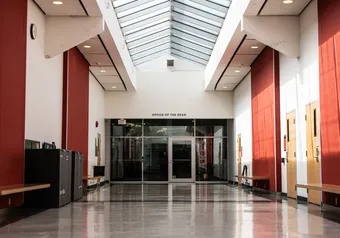Though vaccines may currently be a polarizing issue, research to improve their effectiveness is underway on campus.
A recent discovery made by a group of researchers at UBC may change the way we think about how our bodies fight some infections and develop autoimmune diseases and cancers. The team, a collaboration between the departments of microbiology & immunology, cellular & physiological sciences and mathematics, investigated the way signals from multiple sources in our cells allow the body to fine tune its response to invading microbes.
The portion of our immune system that recognizes and responds to foreign invaders (antigens) are known as B lymphocytes, or B cells. Proteins on the outside of these B cells, known as B-cell antigen receptors, differentiate between “self” molecules -- those that are native to the body -- and foreign molecules and instruct the B cells to respond by producing protective antibodies. Another type of cellular receptor, called Toll-like receptors, help B cells distinguish between harmful and non-harmful foreign matter by sending 'danger signals.'
Researchers at UBC have determined the molecular mechanism by which these receptors 'talk' to one another and increase the sensitivity of our immune system to intruders.
In a resting cell, B-cell antigen receptors are confined to an area on the outer membrane by a web of protein called a cytoskeleton. Michael Gold, the principal investigator of the study and department head of microbiology & immunology, and his team found that antigen receptors on cells prepared by activation of Toll-like receptors moved around the cell membrane more quickly and in a wider area. These B-cell receptors were also more sensitive to low levels of foreign microbes. The researchers showed that these changes occurred because of a breakdown of the cytoskeleton.
“The new thing in this paper is the way to regulate this activation state by the confinement of the receptors by the cytoskeleton and how much they’re moving” said Gold.
Without being confined by the cytoskeleton, the B-cell receptors are more likely to bump into one another to form clusters or encounter foreign microbes, both of which increase the likelihood of the receptors sounding the alarm when intruders are present.
This new understanding of how our cells detect an infection might allow doctors to fine-tune their ability to fight infections through vaccine development.
“Clinical scientists would think about how to translate this into understanding how to make new vaccines or better vaccine strategies'” said Gold.
According to Gold, the study will also help scientists further comprehend how people develop autoimmune diseases and leukemias.
“That would give you maybe a way to treat these if you know the cause, that what’s driving these cells to be proliferated or activated is that their cytoskeleton is altered, maybe you can target the cytoskeleton specifically with drugs,” said Gold.
Gold and his team are currently moving to confirm these findings in human blood cells and understand how our cells respond to invading antigens and these 'danger signals' when they appear at the same time. This will help them to more fully understand how our immune systems respond to infections when they first appear.
CORRECTION: An earlier version of this article used incorrect punctuation in one of Gold's quotes, which resulted in the meaning of a sentence being cut in two. We have since updated the article.
First online
Share this article







